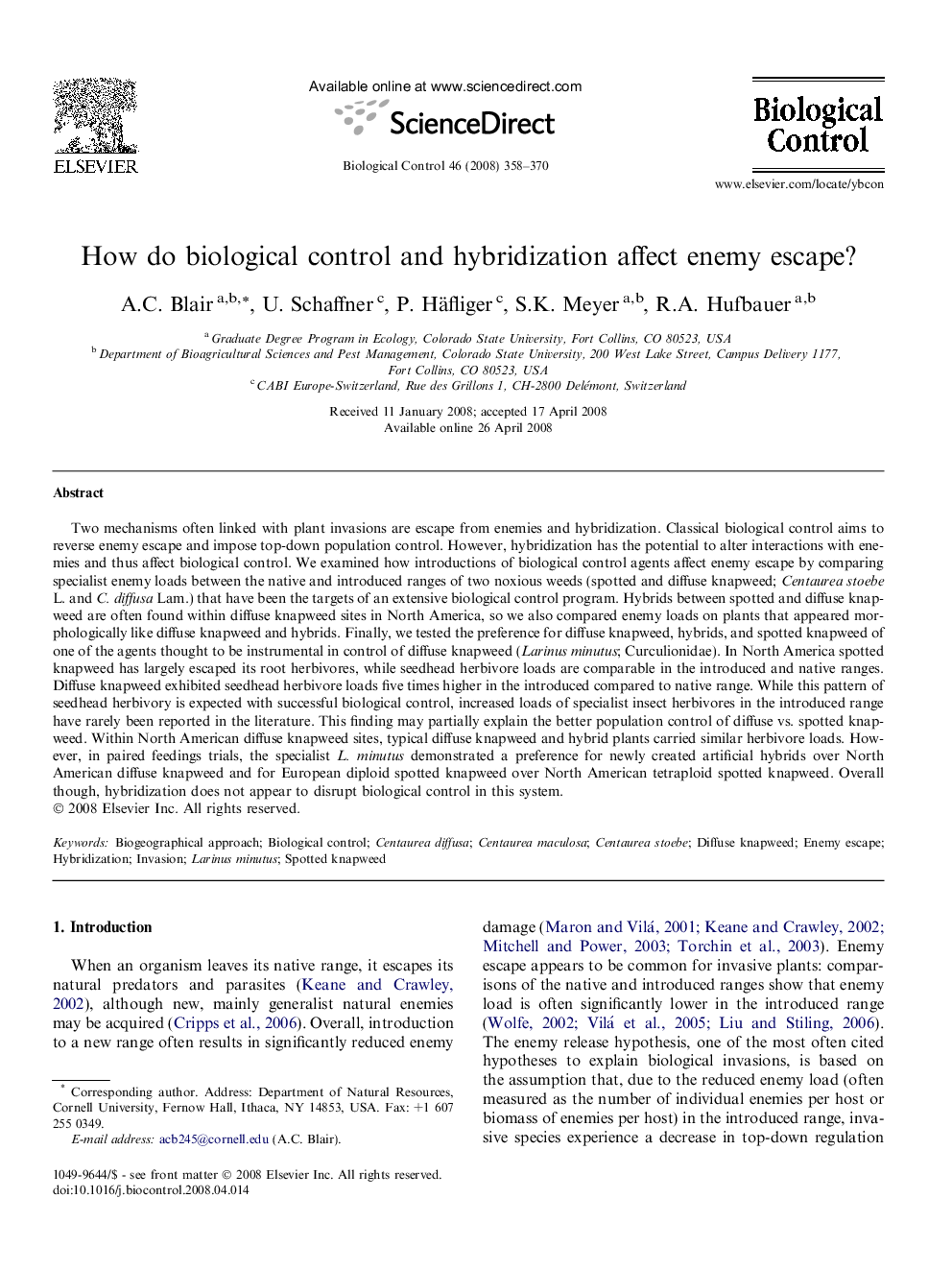| کد مقاله | کد نشریه | سال انتشار | مقاله انگلیسی | نسخه تمام متن |
|---|---|---|---|---|
| 4504808 | 1321112 | 2008 | 13 صفحه PDF | دانلود رایگان |

Two mechanisms often linked with plant invasions are escape from enemies and hybridization. Classical biological control aims to reverse enemy escape and impose top-down population control. However, hybridization has the potential to alter interactions with enemies and thus affect biological control. We examined how introductions of biological control agents affect enemy escape by comparing specialist enemy loads between the native and introduced ranges of two noxious weeds (spotted and diffuse knapweed; Centaurea stoebe L. and C. diffusa Lam.) that have been the targets of an extensive biological control program. Hybrids between spotted and diffuse knapweed are often found within diffuse knapweed sites in North America, so we also compared enemy loads on plants that appeared morphologically like diffuse knapweed and hybrids. Finally, we tested the preference for diffuse knapweed, hybrids, and spotted knapweed of one of the agents thought to be instrumental in control of diffuse knapweed (Larinus minutus; Curculionidae). In North America spotted knapweed has largely escaped its root herbivores, while seedhead herbivore loads are comparable in the introduced and native ranges. Diffuse knapweed exhibited seedhead herbivore loads five times higher in the introduced compared to native range. While this pattern of seedhead herbivory is expected with successful biological control, increased loads of specialist insect herbivores in the introduced range have rarely been reported in the literature. This finding may partially explain the better population control of diffuse vs. spotted knapweed. Within North American diffuse knapweed sites, typical diffuse knapweed and hybrid plants carried similar herbivore loads. However, in paired feedings trials, the specialist L. minutus demonstrated a preference for newly created artificial hybrids over North American diffuse knapweed and for European diploid spotted knapweed over North American tetraploid spotted knapweed. Overall though, hybridization does not appear to disrupt biological control in this system.
Journal: Biological Control - Volume 46, Issue 3, September 2008, Pages 358–370